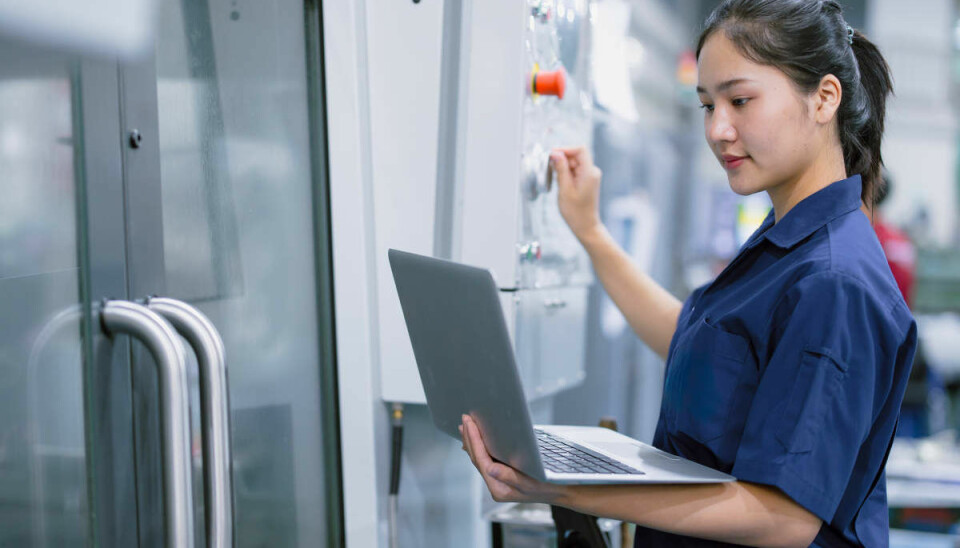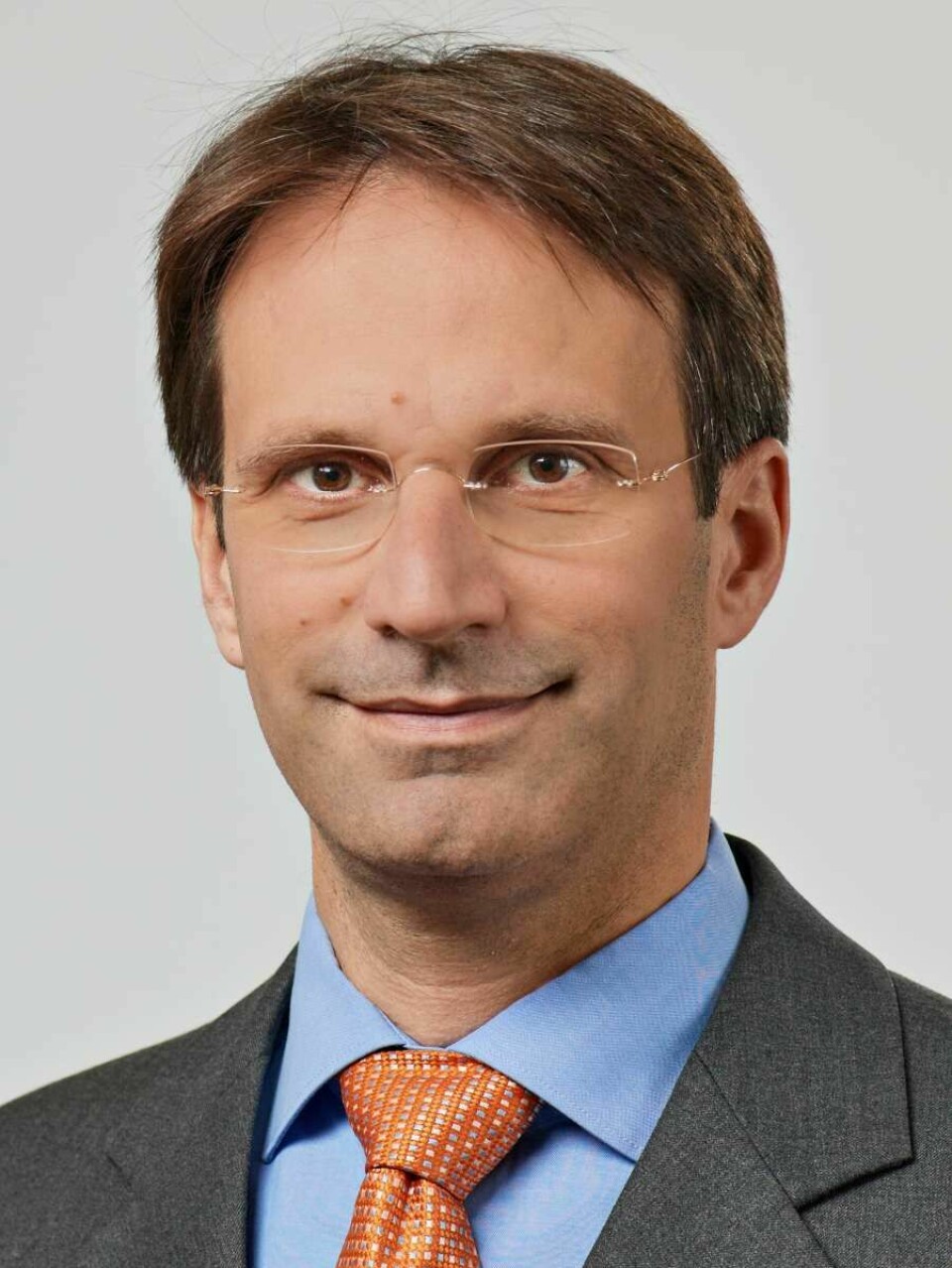Globalization boost in mechanical engineering
Malaysia, Middle East, and Mexico - the new future markets?

What opportunities does the globalization of mechanical engineering bring in Malaysia, the Middle East, and Mexico? An analysis of entry paths, risks, and best practices.
Global growth requires smart location choices. Malaysia, Mexico, and the Middle East attract with industrial offensives but demand strategic excellence. For mechanical engineering companies, this means: Only those who take local partners, political frameworks, and technological trends seriously can gain market share and strategic relevance in these markets.
Malaysia becomes a key market for mechanical engineers
Malaysia has evolved from a raw material supplier to a production hub for industrial products. Particularly, integration into global value chains drove economic advancement. Thanks to targeted trade liberalization and investment policies, the country is now one of the most attractive locations in Southeast Asia - both for mechanical engineers and electronics companies.
However, success in Malaysia requires finesse. Little can be achieved without local distributors or joint ventures - especially with so-called Bumiputra companies. These have a privileged role in the state apparatus and with subsidies. Those who are not prepared for this are left out.
Location in Malaysia opens doors to the Asean market
Typical paths into the Malaysian market include distribution partnerships, as Monika Hollacher, VDMA Foreign Trade, consultant for Southeast Asia, Central Asia, and Eastern Europe, explains: “The most common first step is collaboration with local sales representatives, system integrators, or service partners to sell and maintain machines locally. Subsidiaries or representative offices are also involved.”

Many established companies - such as Bosch Rexroth, Trumpf, and DMG Mori - operate their own sales and service companies in Kuala Lumpur or Penang. "A crucial factor for success in mechanical engineering is the establishment of a local service network - this is expected by customers," says Hollacher.
The establishment of complete production sites is also part of the strategies for entering the Southeast Asian country with its 34 million inhabitants, according to Monika Hollacher: "In recent years, more companies have relocated their manufacturing to Malaysia. This trend has intensified since companies have been rethinking their strategies in Asia and globally under 'China+1' - Malaysia is not a low-cost country, but for mechanical engineering, the cost structure is favorable and access to the ASEAN market and Asia is good."
Penang is the Silicon Valley of Malaysia
Malaysia is emerging as a strategic hub for machinery and plant engineering in Southeast Asia. The government pursues an active industrial policy to specifically promote high-tech sectors - including electronics and semiconductor industries, automation, medical technology, aerospace engineering, and green technologies. Supported by investment incentives and strong economic networks, the country positions itself as a high-tech destination within the ASEAN states.
Above all, the industrial cluster Penang has developed into a center for precision manufacturing, cleanroom technology, and automation - with a growing demand for machines and solutions from the German Mittelstand. "Whether an entry is worthwhile always remains a strategic, individual consideration," says Monika Hollacher. "But for those who want to be present in Asia and in Asean, Malaysia is a good option."
The Malaysian government pursues an active economic policy and advances many sectors, including the electronics and semiconductor industry, especially in Penang. The state is considered the Silicon Valley of Malaysia. Numerous international tech companies operate manufacturing there, which particularly increases the demand for machines for precision manufacturing, cleanroom technology, and automation.
Great potential for high-tech & machines made in Germany
But food and packaging technology are also in the focus of Malaysia's active economic policy. The increasing demand for processed foods and rising standards in quality assurance fuel the market for modern packaging solutions. Investments in hygienic and automated production technologies are commonplace.
In the sectors of automation, industry 4.0, and mechanical engineering, the demand for connectable machines, robotics, IoT solutions, and smart manufacturing systems is also growing rapidly - not only among large corporations but increasingly among medium-sized businesses. However, aerospace technology, medical technology, as well as renewable energies and green technologies, also offer a potential market for machines, components, and specialized knowledge 'Made in Germany'. According to Monika Hollacher: "Regarding purchasing power and willingness to invest, it should be noted: Local companies are investing in new technology, supported by government programs."
Foreign investors are also supported. The Malaysian Investment Development Authority (Mida) is responsible for actively accompanying and supporting technology projects. A strong signal: Malaysian companies are increasingly investing in modern machines and digital solutions. This transformation is not only allowed by the government but promoted - with a focus on import technology and international cooperation.
How the VDMA can open doors in Asean
The VDMA itself strengthens market access for German companies in the Asean region with a new liaison office. The support ranges from networking to market information to concrete mediation with relevant actors such as the AHK Malaysia, Mida, or local consultancies.
“We actively support our members through the VDMA foreign trade and the new VDMA liaison office for Asean in Singapore by connecting interested parties with other VDMA members on site,” says Hollacher. “In addition, there are other supporters such as representatives of the AHK Malaysia and lawyers, as well as the establishment of the network for mechanical engineering in the region.”
How German mechanical engineers can score in Malaysia
Hollacher's practical experiences are somewhat mixed: “Many German companies report a high willingness to cooperate and the learning ability of Malaysian partners, as well as a demand for German quality: The reputation of German machines is excellent. Made in Germany is associated with durability, precision, and service.”
The challenges include bureaucracy in import and installation permits, sometimes fluctuating political regulations such as subsidies, and the shortage of skilled workers in some technical areas - which makes their own training measures sensible.
Malaysia is one of the most industry-friendly countries in the region
In addition to an intact and highly developed infrastructure, Monika Hollacher sees economic openness and the established production economy as the major strengths for globalization projects in the 330,000 square kilometer country: “Malaysia is one of the most industry-friendly countries in the region, with high openness to foreign machines and investments. In addition, the country has a pronounced manufacturing landscape: Machines for metalworking, automation, metrology, packaging, or semiconductors find direct buyers here.”
But Malaysia also has advantages in terms of cost-benefit ratio, because "Malaysia is not a cheap country, but salaries are lower than in Singapore or even China. English is the lingua franca, and employees generally have a good technical education," says Hollacher. As a regional hub, Malaysia's proximity to Singapore, Thailand, and Indonesia also makes it an important bridgehead in Southeast Asia. Finally, the free trade agreements in several free trade zones (Asean, RCEP, and CPTPP) facilitate market entry for globalizing companies through tariff advantages.
Middle East: Industrial boom on the Persian Gulf
From oil giant to innovation region - hardly any region in the world is transforming as rapidly as the Middle East. With visions like Saudi Vision 2030 or the high-tech centers of the United Arab Emirates, states are increasingly positioning themselves as technology locations. The goal is to fundamentally transform Saudi Arabia economically and socially and prepare the country for a future beyond oil dependency.
International players benefit from the expansion of infrastructure, the public sector's investment appetite, and increasing prosperity. Sectors such as hydrogen technology, smart infrastructure, medical technology, and GreenTech are particularly in demand. Nevertheless, the hurdle is high: regulatory requirements vary greatly - as do expectations of business conduct.

Without local partners, market entry is risky, as Dr. Alexander Koldau, VDMA Foreign Trade, Middle East, North Africa, and Turkey Advisor, knows: "Market access varies in difficulty from country to country. Direct export is generally not a formal problem. However, customers usually expect the seller to be engaged locally and generally need time to build trust." This also applies to market entry through representatives; a frequently used option, although in some countries - particularly in the UAE - legal frameworks and long-term dependencies must be considered.
Besides very simple options, such as establishing a branch in a Free Zone in the UAE, establishing a branch in the UAE outside the Free Zones is associated with somewhat greater challenges.
"In general, however, it can be said that countries in the Middle East are increasingly striving for foreign investors - especially if they also bring value creation to the country and do not just plan sales branches - and they support these more or less well." Despite many improvements, there are still bureaucratic hurdles to overcome.
The number of inquiries regarding the region, primarily concerning Saudi Arabia, has increased significantly in recent months, according to Dr. Alexander Koldau: "The focus is on assembly branches to meet the localization requirements of major customers in the country.
Companies that have done this also report significantly improved sales. The main focus of interest and investment is on Saudi Arabia." The VDMA is primarily active in networking interested parties with other VDMA members on site as well as with additional supporters such as the AHK and lawyers.
Industrial offensive: Mechanical engineering benefits from the upheaval in the Gulf
The region is geographically close, and many countries and customers are financially strong. Despite the high price sensitivity, people are willing to pay German prices for German products. In addition, many companies have been known as suppliers in the market for decades. The countries are currently undergoing an economic and socio-political upheaval.
"The dependence on revenues from oil and gas production is to be broken," says Koldau. "This leads to an expansion of value creation in the country and the development of new industries. Furthermore, the countries are also undergoing an energy policy shift towards renewable energies. The geopolitical (and also economic) role as the world's energy supplier is to be maintained, which is why hydrogen production is coming into focus."
The pandemic and grain supply shortages following the outbreak of the Ukraine war have highlighted the region's dependence on food imports, which is being addressed with increased investments in agriculture and food production.
"Another aspect is the development of additional mineral resources beyond oil and gas, which are often present in individual countries but were not considered and developed in the past due to high hydrocarbon revenues," Koldau continues. This makes the region attractive to companies that have not previously seen it as a sales market.
Mexico is a growth market with hurdles
Close to the USA, low labor costs, and a young population - Mexico is the prime example of nearshoring. Especially since the pandemic and supply chain problems, Mexico has been highly regarded as an alternative to the Far East. Numerous free trade agreements - particularly the USMCA (formerly NAFTA) - have created stable trading conditions. Industries such as automotive, mechanical engineering, electronics, and pharmaceuticals are expanding rapidly. But here too, the devil is in the details. Trump's return, regional differences in infrastructure, security situation, and availability of skilled workers have a significant impact on success or failure.

“The path to Mexico rarely begins with the opening of a branch. In most cases, market entry is through export and the first customer order - often facilitated by international corporations that have products manufactured in Mexico and demand German technology,” says Andrew Adair, VDMA Foreign Trade, North America Representative.
Two institutions offer reliable points of contact, especially for German SMEs: The German-Mexican Chamber of Commerce (AHK) in Mexico City and the German Centre Mexico, a unique network and office center founded by LBBW, which is exclusively available to German companies. The German Centre is a hub for machine builders, tech companies, and industrial service providers - with local contacts, synergies, and established structures.
The security situation in Mexico remains a tightrope walk
For many companies, Mexico remains an export market - without its own branch. Machines are delivered, assembled, and serviced - but the base often remains in Germany or the USA. However, with increasing orders, the consideration for local presence also rises. Companies facing this decision systematically examine market size and growth potential in their industry, the security situation in potential regions, the availability of skilled workers and suppliers, logistical connections to the USA and domestic markets, as well as the costs of establishing and operating a branch.
"As an example, Balluff should be mentioned here," says Adair. The automation specialist opened a new production facility in the relatively safe Aguas in 2022 after a comprehensive site analysis with VDMA support: The result was a modern plant that not only creates new capacities but also represents a clear commitment to the region. The investment is therefore more than a production step - it is a strategic bridge to the American market. A key decision factor was: safety for employees and supply chains.
The topic overall: safety. The most critical point remains the security situation in Mexico. The drug war claims thousands of lives every year. Even if industry players are usually not directly affected, business trips, installation teams, and locally visible company locations are potentially at risk, according to Andrew Adair: "Many companies deliberately avoid conspicuous company vehicles, logos, or work clothing. Safety is not a side issue but a central decision factor in every location question."
This is why Mexico's industry is currently booming
Mexico is no longer a secret tip - but one of the fastest-growing export markets for German machinery and equipment. But what does this mean specifically for companies considering getting more involved there? A local branch or production is not necessarily required but can create competitive advantages in the medium term - especially in markets with high service expectations, regulatory advantages through domestic production, or localized bidding conditions (for state-supported industrial parks or USMCA requirements for export to the USA).
"Mexico produces a lot and exports heavily - worldwide, especially (still) to the USA. For this production, machines are needed: The automotive industry, textile manufacturing, food processing, and mining drive the demand for industrial equipment," explains Andrew Adair. "The Chinese are investing massively, US corporations are relocating sites, European suppliers are following - Mexico is becoming the workshop of North America, but also increasingly an independent technology location."
The fact is: German manufacturers who strategically invest early secure supply positions, market shares, and service networks in an increasingly competitive environment. Engagement in Mexico is not automatic, but a real opportunity if business volume, customer structure, and location conditions are right. Again, Andrew Adair: "Export without a branch remains sensible as long as there are no series or service needs. A branch can become sensible when the market and customer loyalty increase - but only with a clear location and security assessment."
What does the Trump comeback mean for Mexico?
Despite all tensions, Mexico remains economically indispensable for the USA. The over 3,000-kilometer-long border, the closely intertwined industrial infrastructure, and the mutual need for skilled workers, goods, and services argue against a break. The trade relations between the USA and Mexico are currently tense.
The new US tariffs question the previous close economic integration and could lead to a significant decline in trade volume and negative economic effects in both countries. However, it is not expected that trade relations will be completely severed. Rather, there are likely to be isolated frictions, not a complete decoupling, according to Andrew Adair: "The trade relationship is too strong to be permanently endangered. Nevertheless, smart strategies are needed."
Mexico is more than just a springboard to the USA
Companies should definitely review the production structure, according to Andrew Adair: "Is the planned manufacturing in Mexico sufficiently localized to meet the USMCA requirements? Only those who meet certain value-added thresholds can export to the USA duty-free. Those who only import pre-assembled machines run the risk of being disadvantaged."
Furthermore, Mexico should not be viewed solely as a gateway to the USA. The domestic market is growing, and Latin America is becoming an increasingly exciting trade region. Companies should therefore also serve local projects and not just focus on exports. The security situation remains the biggest investment obstacle. Regions like Querétaro, Aguascalientes, or Guanajuato offer more stable infrastructure, established industrial parks, and access to skilled labor.
The situation for German companies in Mexico is deteriorating
Mexico offers opportunities - no illusions. As a growth market with strategic proximity to the USA, the country impresses with free trade advantages, an industrial base, and growing demand, according to Andrew Adair: "Well-known companies like Balluff, Siemens Energy, Herrenknecht, or Bosch Rexroth have long since discovered the location for themselves. However, the challenges remain real."
The security situation in many regions is precarious, drug violence is not a fringe phenomenon but a deeply rooted conflict - a de facto state of perpetual war. Geopolitical risks due to the political shift in the USA cannot be ignored either. For German companies with production sites in Mexico, which primarily manufacture for the US market, the situation has significantly worsened due to the introduction of 25 percent tariffs by the USA in the spring of 2025. Over 2,000 German companies are active in Mexico, many of them in industries such as automotive, mechanical engineering, chemicals, pharmaceuticals, and electronics.
Anyone who wants to invest in Mexico needs a cool head, local expertise, and realistic expectations. Production, development, and market entry are not a sprint - they are a strategic marathon. Those willing to take this route will find a dynamic but demanding partner in Mexico within the global production network. However, the fact is: the current US tariffs are a severe blow for German companies in Mexico. They lead to massive cost increases, endanger existing business models, and force many companies to fundamentally rethink their North America strategy.
Edited by Julia Dusold